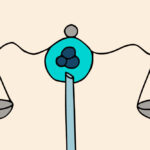What is plagiocephaly?
Chances are if you’ve noticed the flattening of your baby’s […]

In some cases, Plagiocephaly goes away naturally, but for the majority of infants there will be permanent residual deformation—without some sort of intervention. Frequently, cases of facial abnormalities, problems with chewing, eating and vision occur without early correction.
Intervention is most effective before 6 months. Active counterpositioning and orthotic helmets and bands are the three main non-surgical management options for Plagiocephaly. If caught early enough, implementing a few repositioning techniques can help relieve pressure on the baby’s skull and help round out his head. However, if his head has an extremely noticeable flat spot and signs of asymmetry, a more aggressive form of intervention may be needed.
After an evaluation, your child’s doctor may recommend a corrective treatment such as an orthotic helmet or band to reshape the head. Unfortunately, these devices can be expensive and may not always completely correct the deformity. To add to the cost, many insurance companies limit coverage for Plagiocephaly treatments on the rationale that it is just a cosmetic deformity. In extreme cases, craniofacial surgery may be indicated.
If you would like to avoid Plagiocephaly, the best treatment is PREVENTION! Try the following:
- Be conscientious of how much time your baby spends sleeping on his back.
- Begin placing your baby on his stomach during awake time.
- When placing your child in the crib, change his orientation so that the visual stimuli are not always in the same visual angle.
- When she’s laying on her back, orient her head in a slightly different position each time. Examples would be to place her head either straight back, or slightly to the right, or slightly to the left.
- Also, switch arms while nursing. Alternating the holding position from one arm to the other will minimize the risk that the head always rests on the same point.
- In the meantime, look into preventive sleep-orientated products like Basic Comfort’s Symmetry Sleep System. The Symmetry Sleep System was developed to prevent Plagiocephaly by combining a repositioning reminder system with technology that equalizes pressure on an infant’s skull.







